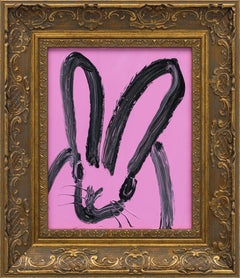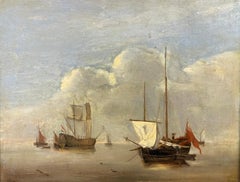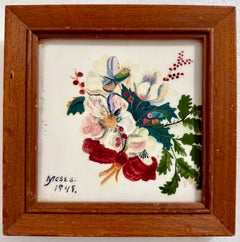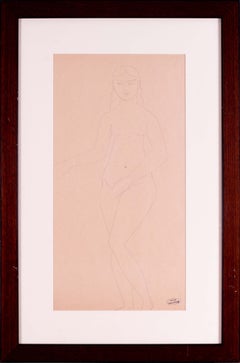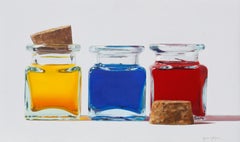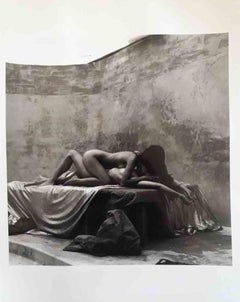Miniature Art
2010s Post-Modern Figurative Paintings
Wood, Oil
18th Century Old Masters Landscape Paintings
Oil, Wood Panel
1940s Folk Art Mixed Media
Ceramic, Paint
Early 20th Century Fauvist Nude Drawings and Watercolors
Paper, Pencil
2010s Photorealist Still-life Paintings
Oil, Panel
1980s Contemporary Black and White Photography
Photographic Paper
Early 2000s Contemporary Black and White Photography
Silver Gelatin
2010s Contemporary Nude Paintings
Wood Panel, Oil
1960s Realist Landscape Photography
Lambda
1970s American Impressionist Landscape Paintings
Canvas, Oil
1960s Figurative Prints
Lithograph
Late 20th Century Impressionist Nude Paintings
Oil
19th Century Still-life Paintings
Panel, Oil
2010s Surrealist Paintings
Canvas, Oil
21st Century and Contemporary American Impressionist Landscape Paintings
Oil
Mid-20th Century Landscape Prints
Woodcut
20th Century Impressionist Landscape Paintings
Oil
2010s Contemporary Still-life Paintings
Canvas, Acrylic
1990s Contemporary Photography
Silver Gelatin
1970s Modern Nude Photography
Silver Gelatin
2010s Contemporary Still-life Sculptures
Ink, Wood, Gouache, Color Pencil
1960s Abstract Prints
Lithograph
2010s Impressionist Abstract Paintings
Gold Leaf
1890s Landscape Photography
Paper, Photographic Paper
1940s Modern Landscape Prints
Lithograph
21st Century and Contemporary Pop Art Figurative Sculptures
Resin, Vinyl
1990s Abstract Expressionist Abstract Prints
Porcelain, Mixed Media, Screen
Mid-20th Century Modern Figurative Drawings and Watercolors
Pencil
Early 2000s Contemporary Figurative Paintings
Oil, Cardboard
21st Century and Contemporary Impressionist Paintings
Oil
Mid-20th Century Post-Impressionist Landscape Paintings
Canvas, Oil
Artist Comments
A silhouette of a horse emerges from geometric shapes and a limited palette. With a minimalistic and modern artistic style, the piece evokes a feeling of simp...
21st Century and Contemporary Contemporary Animal Paintings
Acrylic
1950s Contemporary Black and White Photography
Archival Paper
2010s Academic Landscape Paintings
Canvas, Oil
1940s American Modern Landscape Paintings
Oil, Canvas
1930s Abstract Landscape Paintings
Canvas, Oil
2010s Contemporary Landscape Paintings
Acrylic, Canvas
21st Century and Contemporary Abstract Paintings
Found Objects, Mixed Media, Oil
1890s Prints and Multiples
Paper, Lithograph
1940s American Impressionist Landscape Drawings and Watercolors
Watercolor
Late 19th Century Victorian Animal Prints
Lithograph
1970s Abstract Expressionist Figurative Drawings and Watercolors
Ink
1970s Modern Nude Photography
Silver Gelatin
1970s Modern Figurative Prints
Etching
15th Century and Earlier Old Masters Figurative Prints
Ink, Handmade Paper, Laid Paper, Woodcut
1970s Pop Art Black and White Photography
Silver Gelatin
2010s Abstract Figurative Paintings
Paper, Mixed Media, Oil, Acrylic
19th Century Portrait Paintings
Oil
2010s Contemporary Abstract Paintings
Jute, Resin, Acrylic, Fiberboard
20th Century Impressionist Figurative Paintings
Oil
21st Century and Contemporary Abstract Abstract Prints
Etching
1990s Contemporary Figurative Photography
Photographic Paper
1840s Victorian Animal Prints
Watercolor, Lithograph
1930s Impressionist Landscape Paintings
Oil, Board
1970s Modern Portrait Paintings
Oil, Board
1960s Modern Still-life Prints
Lithograph
2010s Impressionist Figurative Paintings
Canvas, Oil
19th Century Victorian Landscape Paintings
Oil
2010s Contemporary Paintings
Oil
1990s Contemporary Figurative Drawings and Watercolors
Watercolor
